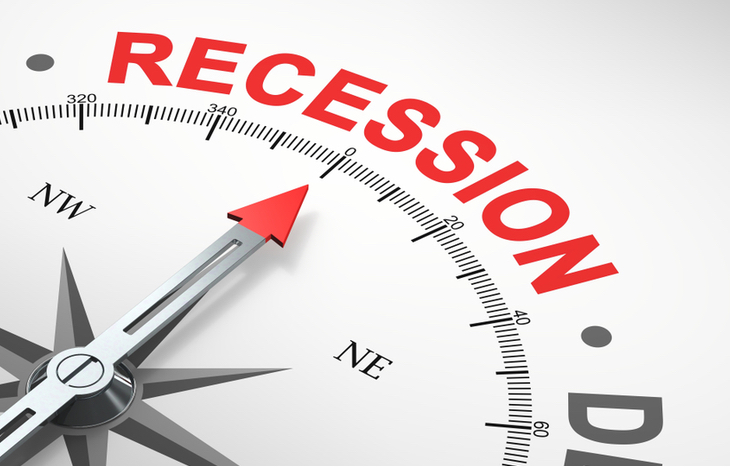How to Invest During a Recession
Recession predictions are piling up. Some predictions show a recession in 2022 or 2023. At the same time, some show a moderate recession rather than a deep one. More optimistic predictions show no recession at all. With many conflicting opinions, investors will likely wonder how to invest during a recession.
A logical first step to investing in a recession is to know what a recession actually is. A panel of experts at the U.S. at the National Bureau of Economic Research (NBER) determines a recession. Though a recession is at the hands of the panel, they give some insight to their thinking. According to the NBER website, a recession is:
A significant decline in economic activity spread across the economy, lasting more than a few months, normally visible in real GDP, real income, employment, industrial production and wholesale-retail sales.
There have been many recessions in the U.S. over the years. Different things brought each on, and each was different in severity. However, the stock market is never happy during a recession.
The good news is that the U.S. economy and the stock market have recovered from every recession in its history. The bad news is that it is nearly impossible to time the market. Instead, investors may want to try investment strategies that focus on time in the market.

How To Invest During a Recession in 2022: Averaging Down
Sticking to an investment strategy can be better than trying to get in and out of stocks at the right time. The stock market can be unpredictable, and missing a recovery in stocks can lead to poor returns.
Worse, investing when stocks are getting beaten down can be scary. Emotions like panic can lead investors to make bad investment decisions. Even in good times for stocks, overjoy can make investors feel more comfortable than they should. To take the psychology out of investing, pick an investment strategy and stick with it!
Averaging Down can be a great way to invest during a recession. For example, say you bought one share of stock for $100. Then a recession hits, and the stock goes down to $50. You’ve averaged down if you can swallow your pride and buy another share for $50.
Now you have two shares for a total value of $150 ($100 for the first share and $50 for the second). The average of the two shares is $75 ($150 divided by two shares). If the recession ends and the share price returns to $100, you’ve improved your returns.
After the shares recover, you’ll have $200 ($100 times two shares). Since you’ve only invested $150, your return is 33% ($50 profit divided by $150 investment. Had you not averaged down, you’d only hold your original $100 share, which has recovered back to $100. Your return would be 0% ($0 profit divided by $100 investment.
Another Recession Investment Strategy: Dollar Cost Averaging
Another strategy to take the guesswork out of investing during a recession is dollar-cost averaging. You may be dollar-cost-averaging in your 401(k) and not even know it.
Dollar-cost averaging is when an investor buys shares of stock, mutual funds or ETFs regularly (like weekly, monthly or quarterly). The other part of the strategy is to pick your investments and stick with them through any environment, recession or not.
Here is an example of how to invest during a recession using dollar-cost averaging. Say you made your regular investment of $100 and bought one share of an S&P 500 index. Then a recession hits, and the index goes down to $50. With your next $100 investment, you get two shares.
Now you have three shares for a total value of $150. Then the recession ends, and the shares recover to $100 each. For your third $100 investment, you’ll buy one more share for $100. At that point, you’ll have a profit of $0 from your first and third investments and $100 from the second investment ($50 profit on two shares).
Your return would be 33% ($100 in profit divided by three regular $100 investments). Meanwhile, the S&P 500 would have returned 0%.
Is it a Good Idea to Invest During a Recession?
Stock markets have always recovered from recessions. In addition, predicting the end of a recession and the bottom of the stock market is virtually impossible. So, timing the market during a recession is not a good strategy.
Instead, investors may be wiser to choose an investment strategy that takes the guesswork out. Furthermore, investing during a recession can be mental torture when you watch your accounts drop. Your investment strategy should also take your emotions out of your investment strategy during a recession.
Where to Invest During a Recession
Dollar Tree (Nasdaq: DLTR) and The Coca-Cola Company (NYSE: KO) are two stocks for a recession. Both companies sell consumer staple products. In other words, customers tend to buy products from the companies during a recession.
Dollar Tree is one of the largest discount sellers in the U.S. Dollar Tree sells everyday needs like soap, trash bags, cleaning supplies, milk, eggs, etc. Customers come back to Dollar Tree again and again for these items. The stock is up more than 18% this year compared to a negative 18% for the S&P 500 index. Dollar Tree stock has a P/E ratio of 25.5x.
Coca-Cola sells the world-famous soda that everyone loves. During a recession, when money is tight for Coca-Cola’s customers, they may give up other expenses before deciding to cut Coca-Cola from their budget. The stock is up about 4% this year but is ahead of the S&P 500 index. Cola-Cola stock pays a dividend yield of just under 3%.





